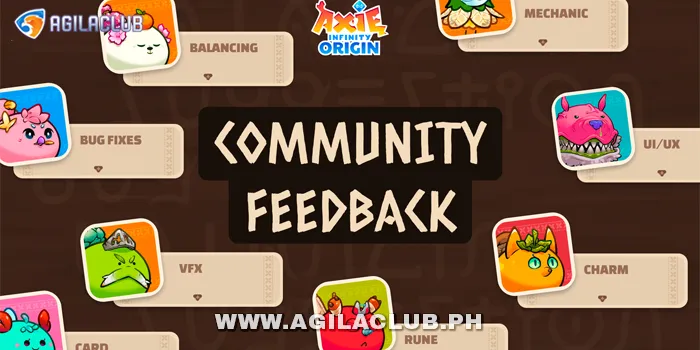
Engaging with your community and gathering their feedback is crucial for continuous improvement. Whether you're managing an online gaming community in the Philippines or any other type of community, understanding your members' opinions can drive positive changes. Here's a guide on effective ways to collect and analyze community feedback, with a focus on the Philippine context.
Why Community Feedback Matters

Community feedback provides valuable insights into the experiences and expectations of your members. For platforms like AgilaClub, this feedback can help:
- Improve user experience
- Identify and fix issues promptly
- Enhance community engagement
- Tailor services to better meet member needs
For instance, knowing the popular slot games and player preferences is crucial for understanding community feedback trends.
Methods for Gathering Community Feedback

There are several strategies you can use to gather feedback from your community effectively:
1. Surveys and Polls
- Simple and Direct: Use short surveys with clear, concise questions.
- Incentivize Participation: Offer rewards or recognition for completing surveys.
- Regular Intervals: Conduct surveys regularly to keep up with changing preferences.
- Mobile-Friendly: Ensure surveys are optimized for mobile devices to increase participation rates.
2. Feedback Forms
- Accessible Everywhere: Place feedback forms on your website, app, and social media pages.
- Anonymous Options: Allow users to submit feedback anonymously to encourage honest responses.
- Follow-Up: Act on the feedback and inform your community about the changes made.
- User-Friendly Design: Make feedback forms easy to navigate and complete.
It may be a good choice to read insights into user experiences and technological advancements in live casino games, since it is also crucial for gathering relevant feedback.
3. Community Forums
- Open Discussions: Encourage open discussions where members can share their thoughts freely.
- Moderate Effectively: Ensure forums are well-moderated to maintain a positive environment.
- Highlight Trends: Identify common issues or suggestions for improvement.
- Regular Updates: Keep forums active with regular updates and responses.
4. Social Media Monitoring
- Active Engagement: Monitor social media platforms for mentions and discussions about your community.
- Prompt Responses: Respond quickly to both positive and negative comments.
- Track Sentiment: Use tools to analyze overall sentiment and identify key areas for improvement.
- Hashtag Campaigns: Use specific hashtags to track and gather feedback on particular topics or events.
5. In-Person Events and Webinars
- Direct Interaction: Host events where community members can provide feedback directly.
- Surveys Post-Event: Send out surveys after events to gather detailed feedback.
- Feedback Sessions: Include dedicated feedback sessions during webinars or meetups.
Strategies for Analyzing Feedback

Collecting feedback is just the first step. Here's how to analyze and use it effectively:
1. Categorize Feedback
- Organize Data: Group feedback into categories such as usability, features, and support.
- Prioritize Issues: Focus on the most frequently mentioned issues first.
- Use Tags: Tag feedback with relevant keywords for easier analysis.
2. Use NLP Techniques
- Text Analysis: Use Natural Language Processing (NLP) tools to analyze open-ended responses.
- Identify Keywords: Look for recurring keywords and phrases to understand common concerns.
- Sentiment Analysis: Determine the overall sentiment of the feedback to gauge community mood.
3. Implement Changes
- Develop Action Plans: Create clear action plans to address the feedback.
- Communicate Updates: Keep your community informed about the changes and improvements.
- Track Changes: Monitor the impact of changes and adjust strategies as needed.
4. Monitor Progress
- Track Improvements: Continuously monitor the impact of implemented changes.
- Seek Further Feedback: Regularly check back with the community to ensure satisfaction.
- Iterative Process: Treat feedback collection and implementation as an ongoing process.
Best Practices for Effective Feedback Collection
To make the most out of community feedback, consider these best practices:
- Transparency: Be open about how you collect and use feedback.
- Regular Communication: Keep your community informed about ongoing improvements.
- Personal Touch: Address individual feedback personally when possible.
- Data Privacy: Ensure that all feedback is collected and stored securely.
- Cultural Sensitivity: Be aware of cultural nuances, especially in diverse communities like the Philippines.
Philippine Context: AgilaClub's Approach
For AgilaClub, integrating community feedback has been essential in tailoring their services to the unique needs of Filipino gamers. By regularly conducting surveys and actively engaging on social media, AgilaClub has been able to:
- Enhance game offerings based on player preferences
- Improve customer support services
- Foster a more engaging and inclusive community environment
Examples of Effective Feedback Implementation
- Game Updates: Based on feedback, AgilaClub introduced new game features and fixed bugs promptly.
- Community Events: Organized community events and tournaments that were highly requested by players.
- Customer Support: Enhanced customer support services, leading to faster response times and higher satisfaction rates.
Conclusion
Effective ways to collect and analyze community feedback can significantly improve your community's overall experience. By implementing these strategies and continuously engaging with your members, platforms like AgilaClub can drive ongoing improvements and maintain a vibrant, satisfied community. Regular feedback collection, combined with transparent communication and effective implementation, ensures that the community remains dynamic and responsive to the needs of its members.




